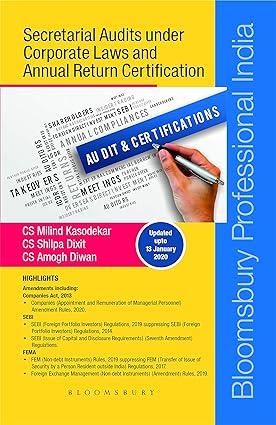1. In an engineering works, the standard time for a job is 16 hours and the basic wage is Re.1 per hour. A bonus scheme
1. In an engineering works, the standard time for a job is 16 hours and the basic wage is Re.1 per hour. A bonus scheme is instituted so that worker is to receive his normal rate for hours actually worked and 50% bonus for the time saved. Materials for the job cost Rs.20 and overheads charged on a basis of Rs. 2 per labour hour. Calculate the wages and effective rate of earnings per hour if the job is completed (A) - 12 hours and (B)- If completed in 14 hours. Also ascertain the factory cost of the job on the same basis.
2. The standard hours of job X is 100 hours. The job has been completed by Virat in 60 hours, Shreyash in 70 hours and Rohit in 95 hours. The bonus system is applicable to the job is as follows:
Percentage of time saved | Bonus |
Saving up to 10% | 10% of time saved |
From 11% to 20% | 15% of time saved |
From 21%-40% | 20% of time saved |
From 41% to 100% | 25% of time saved |
The rate of pay is Re.1 per hour. Calculate the total earnings of each worker and also the rate of earnings per hour.
3. Calculate the earnings of A and B under Straight Piece rate and Taylor's differential piece rate system from the following:
Standard Production- 7 units per hour
Factory day- 8 hours
Normal time rate- Rs2.80 per hour
Differential piece rate: 80% of piece rate below standard and 120% of piece rate above standard.
A produces -50 units a day
B produces- 60 units a day
4. In a manufacturing company a daily wage rate is guaranteed for a worker is Rs. 1.87 and the standard output is fixed for the month is 1,000 units, representing 100 percent efficiency. The daily wage rate is paid without bonus to those workers who show up to 66. 67% efficiency standard. Beyond this there is bonus payable is a graded scale in a fixed ratio to the increased output as follows:
Efficiency | Bonus payable |
90% | 10% |
100% | 20% |
Further increase of 1% for every 1 percent further rise in efficiency. Find out the total earnings of A, B, C and D who have worked for 26 days in a month. Worker's output is A- 500 units, B- 900 units, C- 1,000 units and D- 1,100 units.
5. A worker takes 9 hours to complete a job on daily wage and 6 hours on a scheme of payment by results. His daily rate is 75 paise an hour: the material cost of the product is Rs.4 and the overheads are recovered at 150% of the total direct wages. Calculate the factory cost of the product under: A- Piece work plan, B- Rowan Plan- C- Halsey plan.
6. From the following data calculate the total monthly remuneration of three workers A, B and C. Standard production per month per worker is 1,000 units Actual production during the month- A- 850 units, B- 720 units and C- 960 units. Piece work rate- 0.20 per piece Dearness Wages- Rs50 per month (fixed), House Rent Allowance - Rs.20 per month (fixed), Time allowances- Rs.20 per month (fixed) Additional production bonus at the rate Rs.5 per each percentage of actual production exceeding 80% of the standard.
7. From the following particulars you are required to work out the earnings of a worker for a week under:
- Straight piece rate,
- Differential piece rate
- Halsey premium plan
- Rowan Premium plan
Weekly working hours- 48
Hourly wage rate- Rs.7.50
Piece rate per unit- Rs 3
Normal time taken per piece- 20 minutes
Normal output per week-120 pieces
Actual output per week- 150 pieces
Differential piece rate- 80% of piece rate below standard and 120% of piece rate above standard.
Step by Step Solution
There are 3 Steps involved in it
Step: 1

See step-by-step solutions with expert insights and AI powered tools for academic success
Step: 2

Step: 3

Ace Your Homework with AI
Get the answers you need in no time with our AI-driven, step-by-step assistance
Get Started


